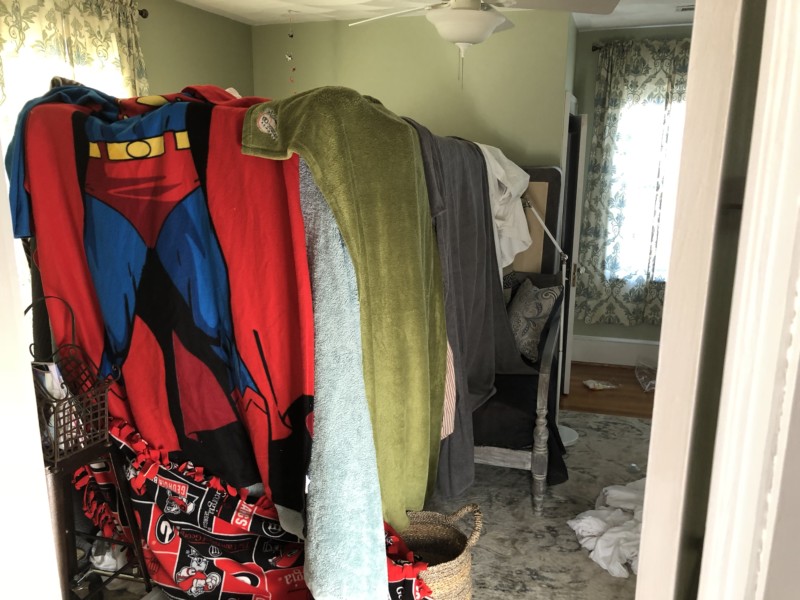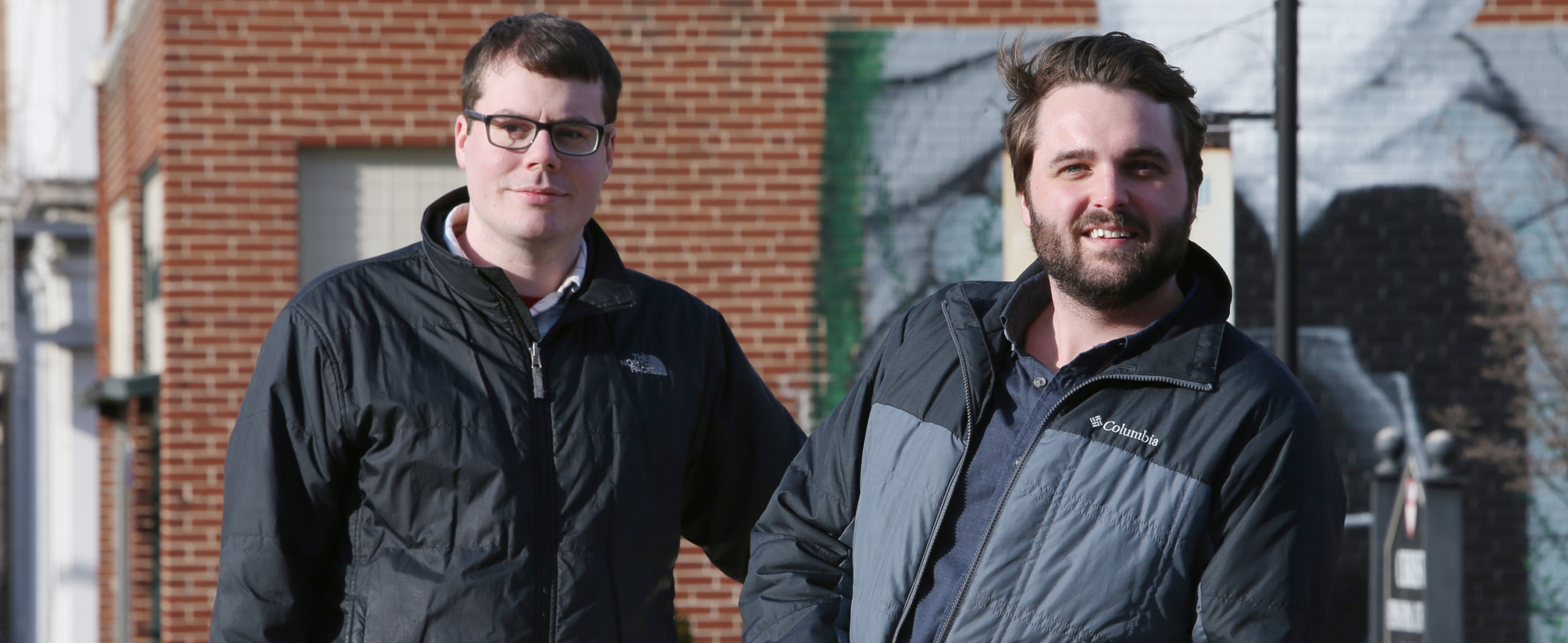After The Roanoke Times released its new podcast, Septic, reporters Jacob Demmitt and Robby Korth braced themselves for negative comments.
The series was the Southwest Virginia newspaper’s first attempt at a narrative podcast, created on a nearly non-existent budget. It was also Korth and Demmitt’s attempt to set the record straight on a criminal case that sparked outrage and speculation in the New River Valley. In 2015, Pulaski County resident Ashley White became a pariah in her community after her five-year-old son, Noah Thomas, was found dead in a septic tank near her trailer. Online commenters spread unfounded rumors on social media: that Noah had been murdered, that his body was found in a bag. When the podcast came out, Demmitt felt certain that locals would dismiss the show out of hand.
ICYMI: Equipment you’ll need to start your own podcast
Instead, Demmitt saw commenters encouraging conspiracy theorists to give the podcast a chance. Some even corrected common rumors using information from the show. “The facts were finally winning out in the Facebook battle,” Demmitt says.
Septic quickly found success outside Southwest Virginia. Listeners in all 50 states and in five dozen countries have downloaded the series. Apple featured Septic in iTunes’ “New and Noteworthy” category, which gave the show a boost. As of June 12, Septic was among the top 20 podcasts in Apple’s News & Politics category.
Despite his initial fears—a lack of professional equipment and editing expertise among them—Demmitt says producing Septic required far less than he and Korth initially anticipated.
“We thought we needed all these things to produce something that sounded good,” Demmitt says. “The fears that we had were not valid. This idea that, ‘If we’re gonna do an interview, we need $1,000 worth of equipment’—that’s not the case.”

The “blanket fort” studio where Korth and Demmitt recorded Septic.
THE ROANOKE TIMES isn’t the only Virginia newsroom to recently release a gripping true crime podcast. In the fall of 2017, The Virginian-Pilot in Norfolk released The Shot, a seven-part mystery series centered on the unsolved killing of a local police officer in 2010. Gary Harki says he and fellow reporter Joanne Kimberlin had wanted to explore Victor Decker’s murder for at least two years. Serial provided a format that fit Decker’s story.
As with Septic, The Shot compensated for a low budget with in-house knowledge and ingenuity. Harki says most of The Shot was created using microphones, cables, and other audio equipment the newspaper already owned for in-house video projects. The Pilot’s audio and video director, Randy Greenwell, says the paper spent about $700 to buy additional microphones and recorders for the project. He used Final Cut Pro, which the paper already owned, to edit the audio.
If we had gone to the top editors and asked for a couple thousand dollars in equipment, there’s a chance they would have done it. But that would have put expectations on the show.
Greenwell played a crucial role in guiding and producing the project. He used an abandoned conference room to create a makeshift studio, with bits of soundproofing material adhered to the walls. The team conducted most of their interviews in that studio to ensure sound quality. Greenwell also helped Kimberlin and Harki find their broadcast voices, even coaching them on specific sentences so that the podcast’s narration would hit the right notes .
“There’s an art form to doing that and making it sound like you’re either not dead inside or a cartoon,” Harki says.
Since its release, Harki says, The Shot has been well received, both by listeners and by most of the sources who participated. In its first two weeks, The Shot was among Apple’s top 200 podcasts. It’s been listened to over 70,000 times and has over 275 five star ratings. On June 12, The Shot won third place in the Society for Features Journalism’s Best Podcast category. It also won a regional Edward R. Murrow Award and was named an honoree by the Webby Awards for best podcasts and digital audio.
“The response we got from people in the community has been very positive,” Harki says. “I think a lot of people who knew about that case felt like there was more there that they didn’t understand.”
Roanoke Times reporters were even more thrifty when producing Septic. Demmitt said he and Korth spent about $20 on the podcast—enough to pay for a cassette player and a microphone pop filter. (The cassette player was used to listen to an old courtroom evidence tape that contained a recording of a 911 call that was made the day White’s father was murdered.) They used Audacity, a free service, to put the show together, and borrowed a recorder from Korth’s father to gather audio. For the podcast’s theme music, they asked fellow reporter Mike Gangloff if they could use a song he performed with musician Matt Peyton called “Blind Man’s Lament.”
“Our studio was a blanket fort with two-by-fours over like a daybed in Jacob’s spare room with just blankets and towels,” Korth says. “It’s not like an ideal setup, but it worked.”
Demmitt and Korth say keeping the cost of the project low was a hedge in case the project flopped.
“If we had gone to the top editors and asked for a couple thousand dollars in equipment, there’s a chance they would have done it,” Demmitt says. “But that would have put expectations on the show.”
Demmitt says newsrooms that are interested in creating their own podcast should just get started, instead of worrying about lack of skills or equipment.
FOR BOTH PROJECTS, the biggest cost was time. Septic took about a year to complete, while The Shot took more than six months. Having the support of leadership was key to crafting an excellent finished product. Demmitt and Korth said The Roanoke Times’ New River Valley editor, Todd Jackson, was happy to give them space to focus on the project. Similarly, The Virginian-Pilot’s former top editor, Steve Gunn, was very supportive of The Shot, Harki said.
“Like all editors in those positions, he’s mostly worried about resources,” Harki says. “There’s been a big push here to digital first, to going beyond the print edition. I think he saw this as kind of a thing that allowed people to see that there were ways of doing that that went beyond putting a story up first online.”
Both The Roanoke Times and The Virginian-Pilot had to navigate learning curves in order to produce their first narrative podcasts. But Demmitt says newsrooms that are interested in creating their own podcast should just get started, instead of worrying about lack of skills or equipment.
“If you want to do it, you absolutely can do it on a shoestring budget,” Demmitt says. “I think when you do things yourself, and you keep things lean and small and informal, you’re able to be scrappier and more adaptive.”
ICYMI: A master audio storyteller on how to create a powerful podcast
Tadhg Hylier Stevens is an independent journalist living in Seattle, Washington. Their work focuses on the media, the LGBT community, and the triumphs and trials facing marginalized communities throughout the US. Follow them on Twitter at @tadhgstevens.

